Look north on winter evenings and you’ll see the familiar pattern of the Plough or Big Dipper rising up over the horizon. Four of the brightest stars in the constellation of Ursa Major, the Great Bear, form a distinctive ‘bowl’ or ‘blade’, while three more make a curving handle.
Even a casual glance at Mizar (Zeta (ζ) Ursae Majoris), the middle star of this handle, should reveal something unusual about it: a fainter companion, Alcor (80 Ursae Majoris), separated by about one-third the width of a full Moon.Mizar is a double star.
Read our guide to the best winter constellations.
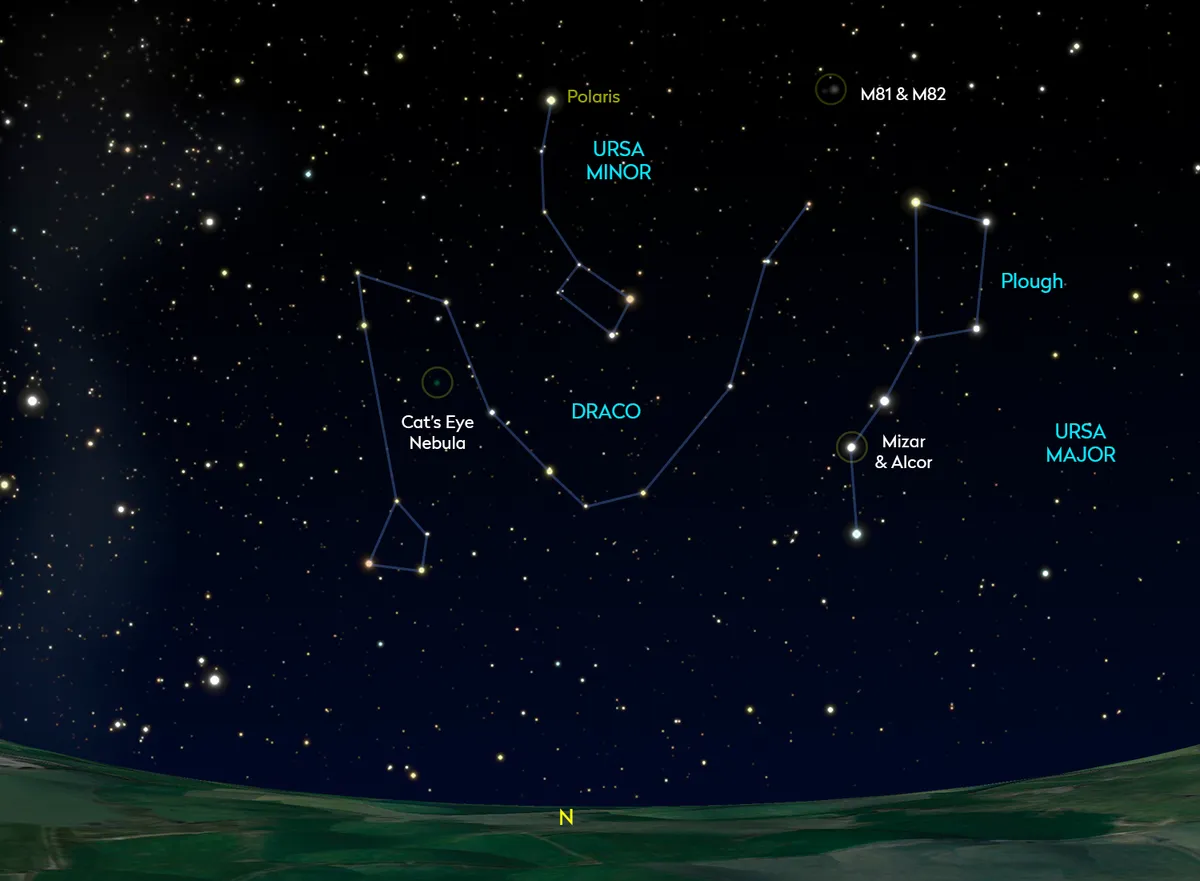
Stars, like bobbies on the beat, have a tendency to come in pairs. Born in large star clusters from collapsing clouds of interstellar gas, they’re gregarious by nature, and many emerge from the turbulent breakup of their birth cluster still locked in orbit with one or more companions.
Most of these stellar pairings are too closely bound (or too far away) to be seen with even a powerful telescope, but the Mizar / Alcor pair is easy to spot with the naked eye alone (much like Zeta Reticuli in the southern hemisphere sky).
Such a close pairing might seem to immediately mark the two stars out as a genuine binary star (a pair bound together by gravity in orbit around each other), but the link remained unproven for a long time.
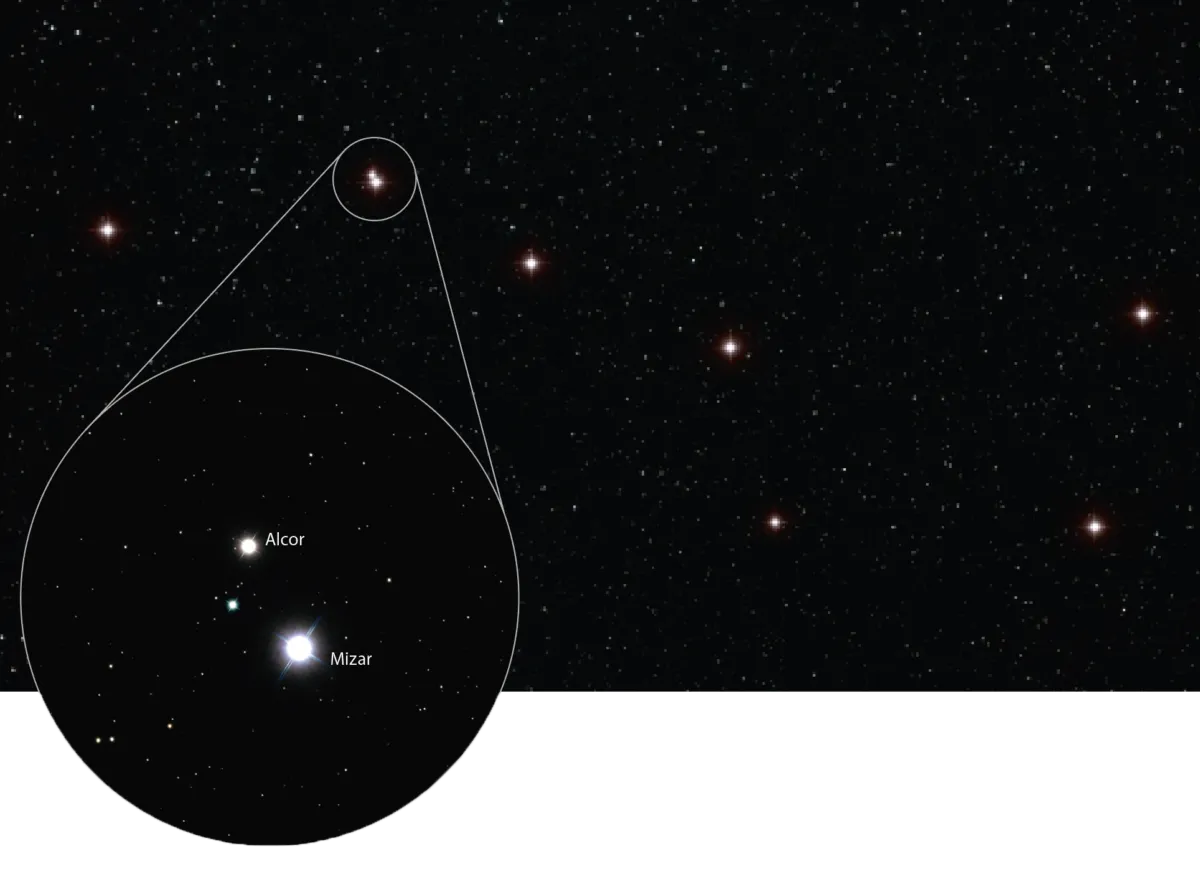
It wasn’t until 1869 that Richard Anthony Proctor discovered that both stars are moving in the same direction across the sky, as members of the ‘Ursa Major Moving Group’ (a scattered system of stars that marks the remains of a nearby disintegrating star cluster).
We now know that they are both about 82 lightyears from Earth and are bound by gravity in a loose, million-year orbit.
How Mizar and Alcor were discovered
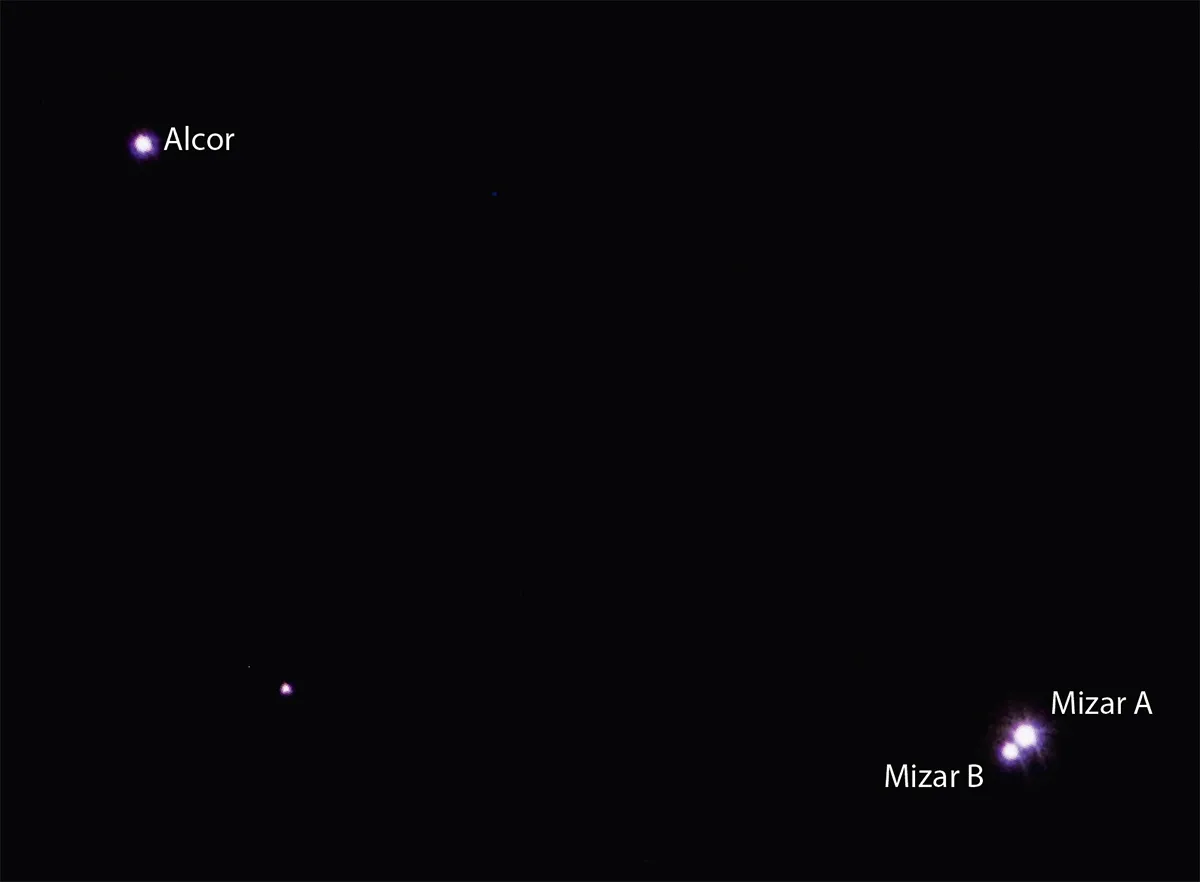
Take a look at Mizar itself through binoculars and depending on your eyesight it’ll either look slightly blurry, or you may see that it’s actually split into two stars of differing brightness, Mizar A and B. A small telescope should show them easily.
Mizar’s binary nature was first spotted by Italian monk Benedetto Castelli around 1617, and from the 1650s it became a firm favourite for observers.
Countless other tight stellar pairings were found across the sky as telescopes improved. But it wasn’t until 1802 that William Herschel argued there were too many double stars in the sky to be merely a chance – some must be gravitationally bound pairs, which he called ‘binary stars’.

Herschel proved his case by showing that another stellar pair in Ursa Major, known as Alula Australis (Xi (ξ) Ursae Majoris), was shifting their relative positions in the sky as they orbited each other.
He attempted similar measurements for Mizar, but found that its stars moved too slowly due to their wide separation (today we know that they take about 5,000 years to orbit each other).
By the 1890s, however, Mizar revealed a further secret when astronomers captured the spectra of its two stars – the rainbow-like bands produced when their light is split according to colour and wavelength.
Dark lines in the spectrum of Mizar A – caused by calcium in the star’s atmosphere absorbing specific wavelengths of light – appeared fuzzier than in other stars, and periodically split apart into separate lines.
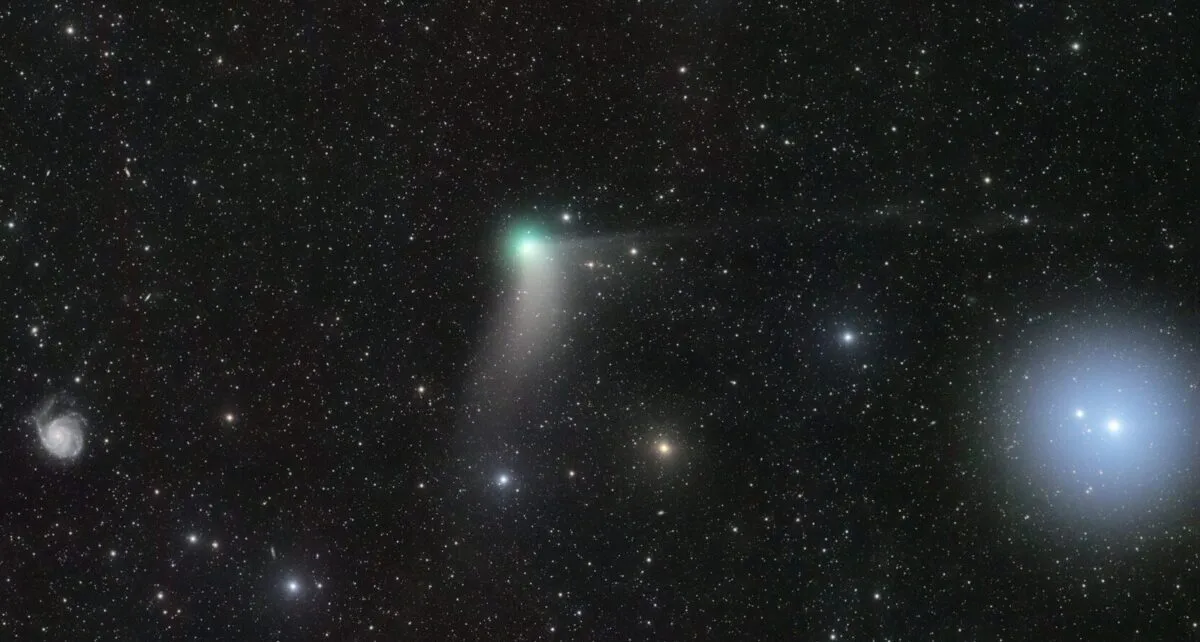
This strange behaviour revealed that Mizar A is itself a binary star, with two components that are inseparable through even the most powerful telescope.
The fuzziness and splitting of the spectral lines is caused by the Doppler effect – the compression or stretching of light waves (and slight accompanying shifts in their colour) when stars move towards or away from Earth.
When one star is moving at its fastest towards us and the other away, these shifts are at their greatest, while at other times in their 20.5-day orbit, the effect is unnoticeable.
As the first ‘spectroscopic binary’ to be discovered, Mizar A paved the way for a huge range of new techniques that allowed astronomers to calculate the mass and other physical properties of stars in the early 20th century: just one of many ways in which this remarkable stellar double act has contributed to our understanding of how stars form, live and evolve.
Miza and Alcor: stellar sextuplets
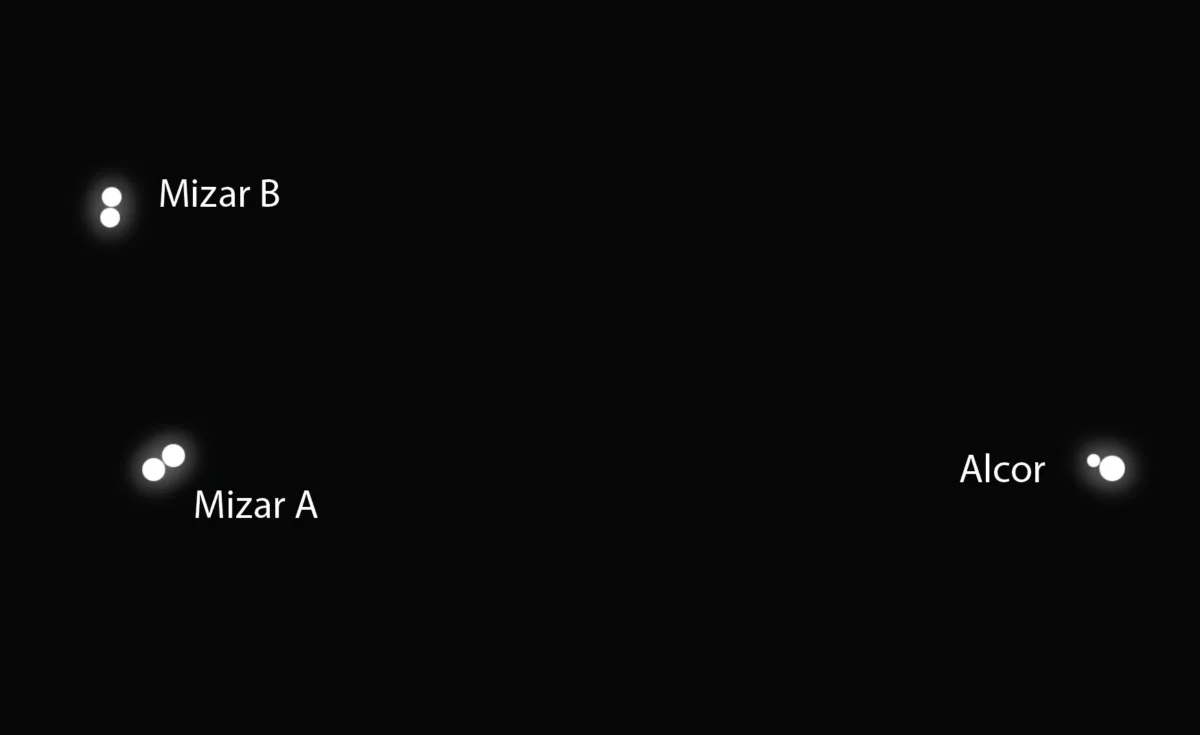
The discovery of Mizar A’s binary nature made Mizar (considered alone) the first triple star system of this kind to be discovered, and in 1908 it became the first quadruple star when astronomers Edwin B Frost and Hans Ludendorff discovered that Mizar B is a spectroscopic binary in its own right.
In the mid-20th century, astronomers also suspected that Alcor might be a spectroscopic double, although this idea was disproved in 1965.
However, in 2009, another twist in the tale came courtesy of Clio, an infrared exoplanet-hunting instrument at the University of Arizona’s MMT observatory.
Ignoring the bright visible light pumped out by Alcor’s hot white surface, it zeroed in on a faint infrared signature and confirmed the presence of a tiny red dwarf star orbiting Alcor.
The discovery of ‘Alcor B’ also finally settled lingering doubts about the relationship between Mizar and Alcor, explaining why Alcor occasionally deviated from the path predicted for its orbit around Mizar. A family of scattered stellar sextuplets was finally reunited.
Giles Sparrow is an astronomy writer and author of A History of the Universe in 21 Stars. This article originally appeared in the February 2021 issue of BBC Sky at Night Magazine.